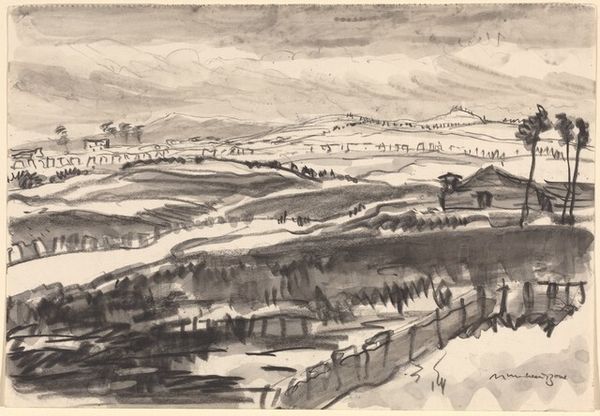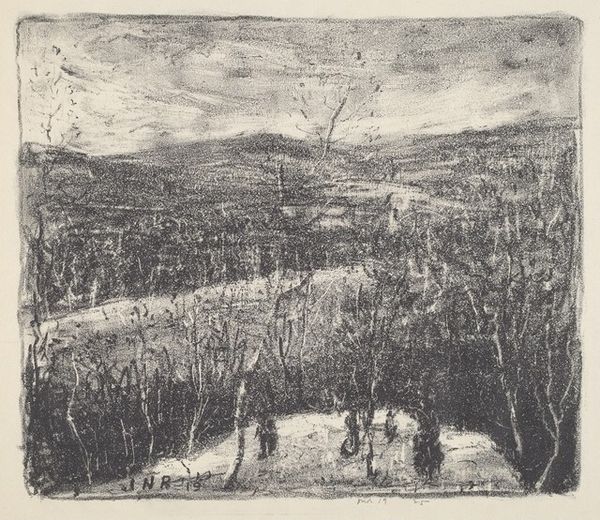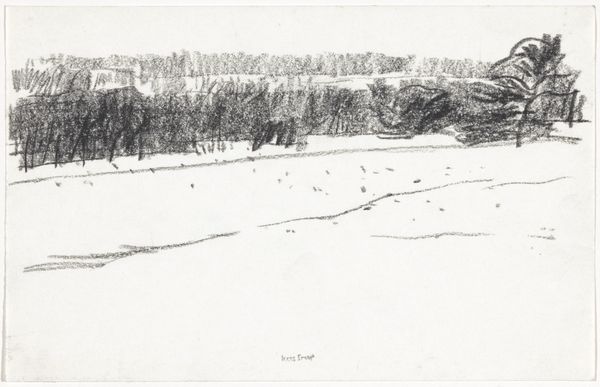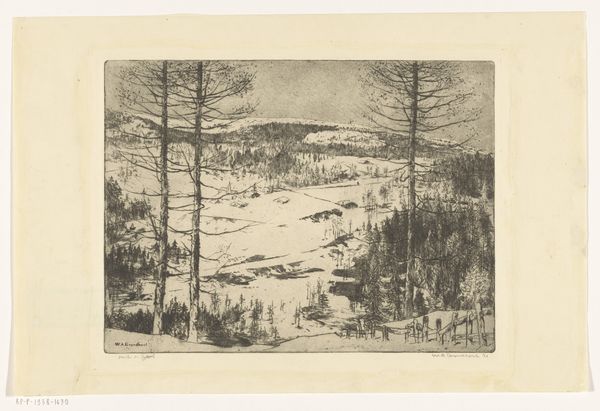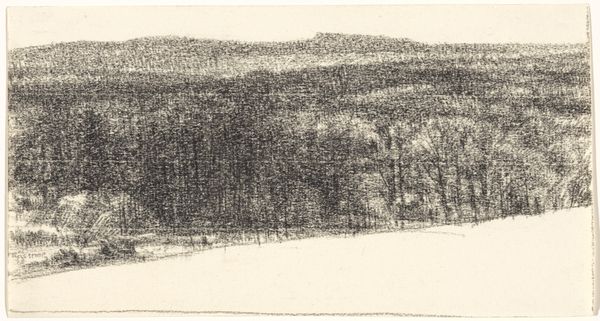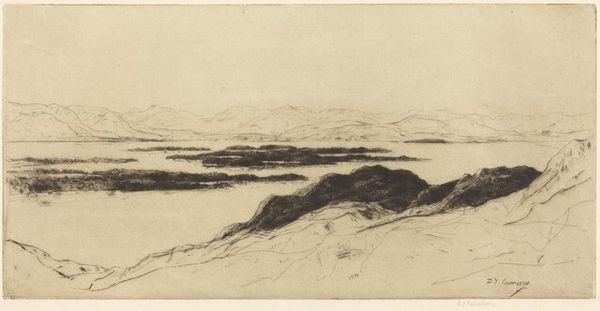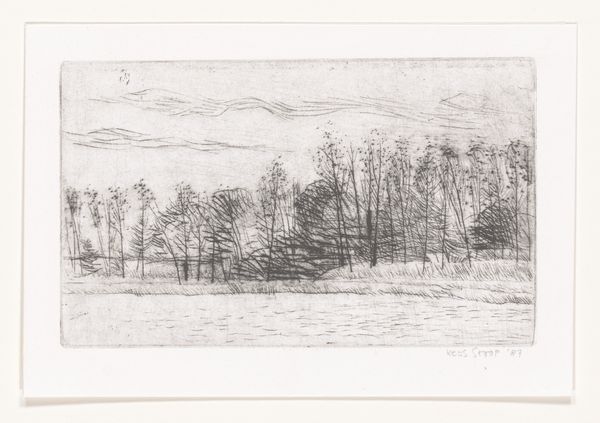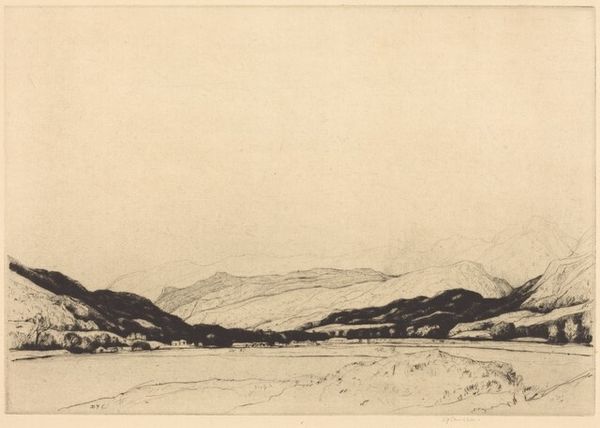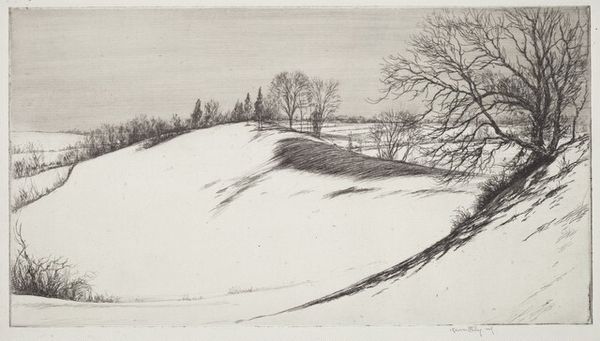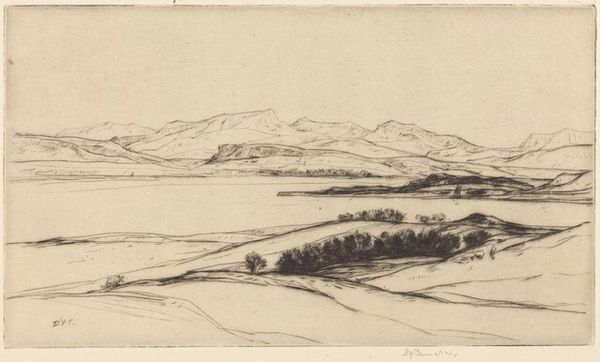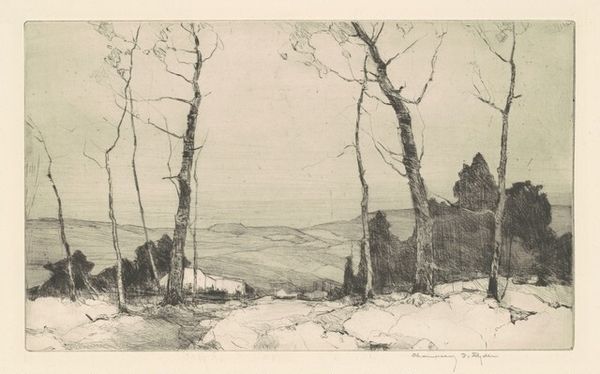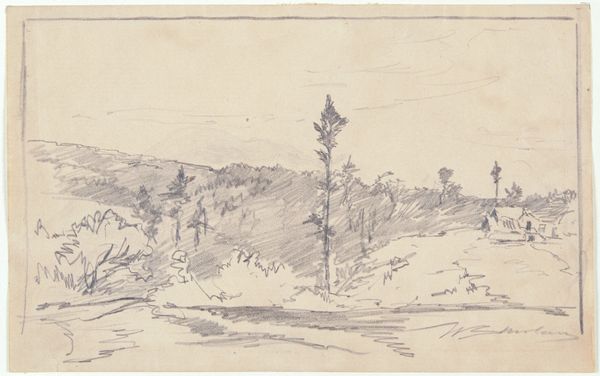
drawing, print, graphite
#
drawing
# print
#
landscape
#
charcoal drawing
#
pencil drawing
#
graphite
Copyright: National Gallery of Art: CC0 1.0
Curator: The stillness in this image strikes me. Editor: I agree. Today, we are looking at “Winter Landscape, Shanty Brook,” a print and drawing created by James N. Rosenberg in 1919, likely in graphite or charcoal. What initially captures your attention? Curator: It's the heavy sky. All that textured darkness looming over the delicate, almost skeletal trees. It speaks to a psychological weight, doesn’t it? A sense of impending something. Editor: It certainly sets a mood. Thinking about the historical context, 1919 was the year following the end of the First World War, also marked by the height of the Spanish Flu pandemic. One could argue that the heavy sky represents collective trauma and the anxiety of that era. Curator: Precisely! And the dark peak of the central hill – it's almost like a barrier. Is Rosenberg suggesting the landscape is guarding some hidden knowledge, or a painful memory that must be contained? There’s also something universal here. Winter, historically, represents cycles of decay and regeneration, of reflection. Editor: Absolutely. We have this imagery of cyclical existence combined with the context of an incredibly destructive and disruptive historical event that fundamentally altered a generation’s understanding of the world. Perhaps the symbol of winter’s bleakness as indicative of a longing for things that are lost, while spring as the rebirth becomes increasingly elusive for those with these historical scars. Curator: Look at those few determined trees, pushing upward through the snow. Their symbolism contrasts beautifully with the subdued landscape. They speak to a subtle, but unyielding hope – a reminder that even in the darkest of times, life persists. Editor: Though I interpret this not necessarily as hope, but simply, as survival, endurance. They bear witness to the ravages of the environment while refusing to succumb. A political parallel might be drawn to those communities and populations that withstand oppression through means of perseverance despite all obstacles. Curator: Perhaps we’re both correct. This is the beautiful thing about art; the symbol and the reading will remain individual to each observer, filtered through the lens of their own perspective and experiences. Editor: A vital conversation about remembrance and possibility. Curator: Precisely, offering a reminder that the visual language continues to evolve through memory.
Comments
No comments
Be the first to comment and join the conversation on the ultimate creative platform.
